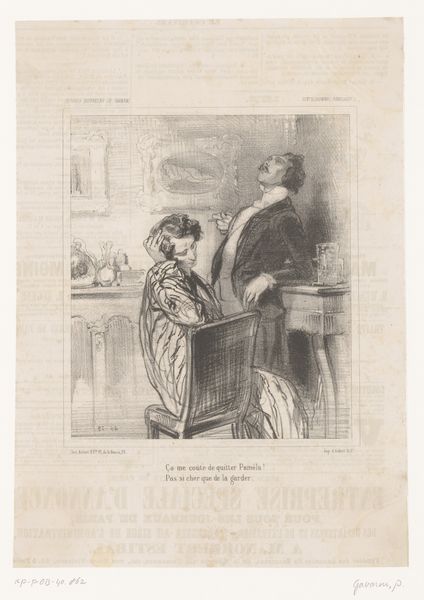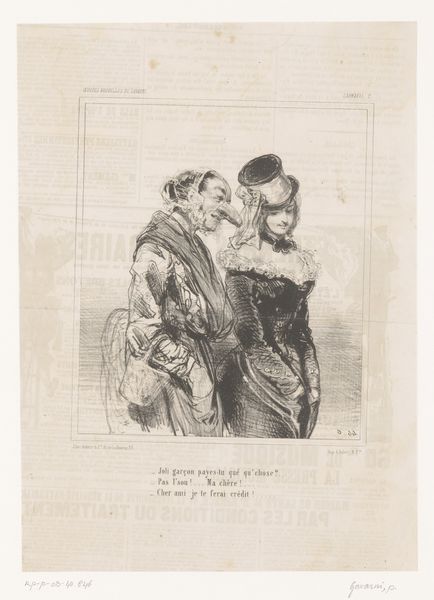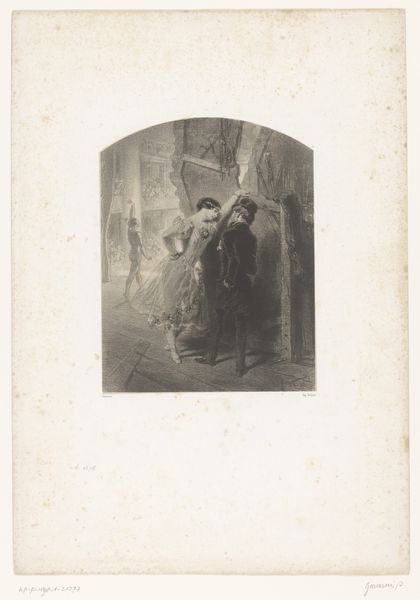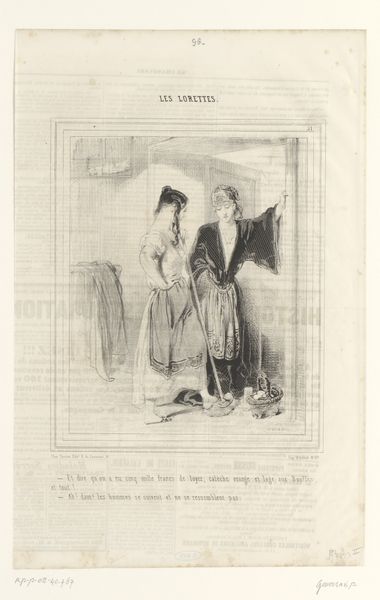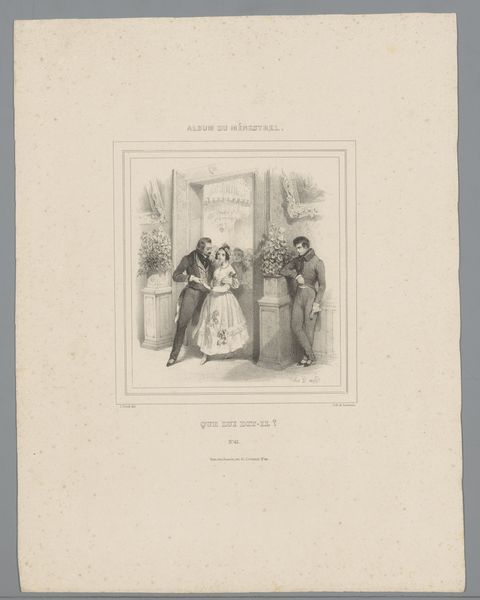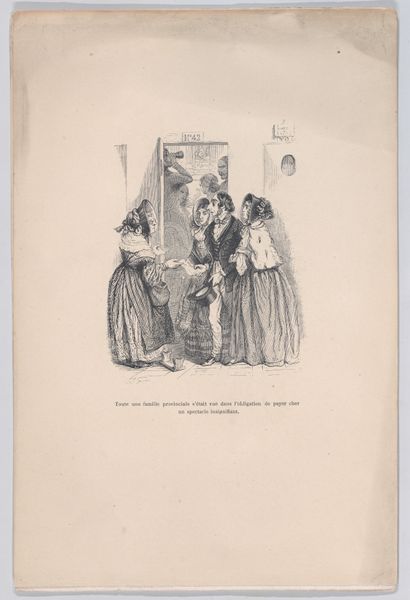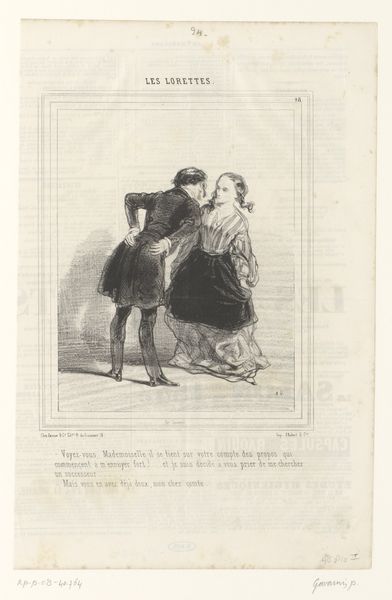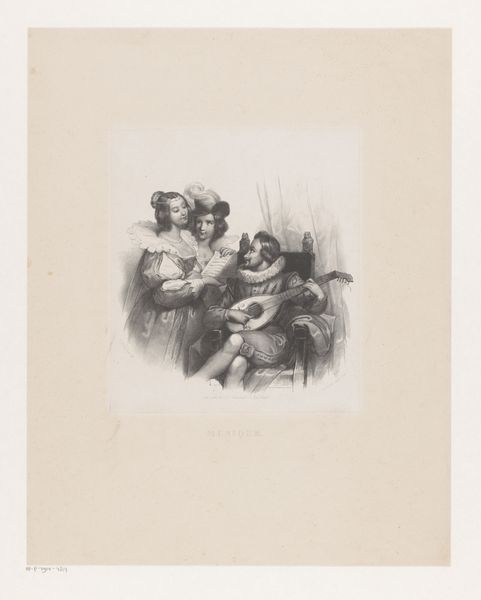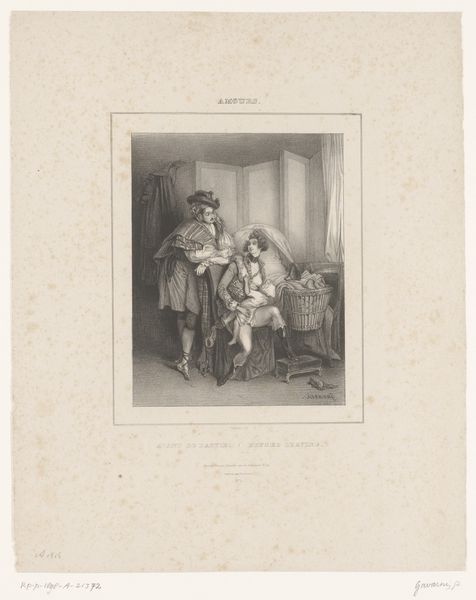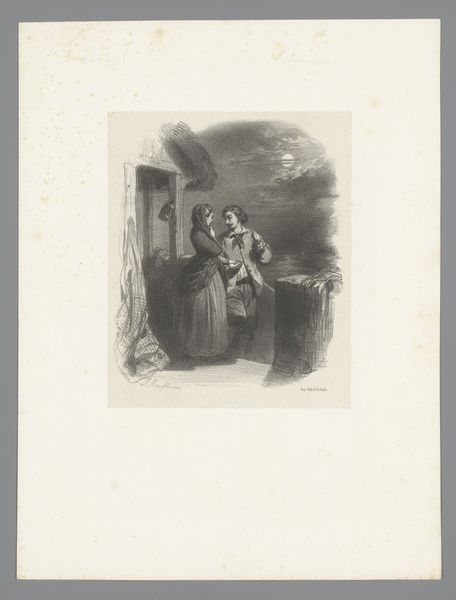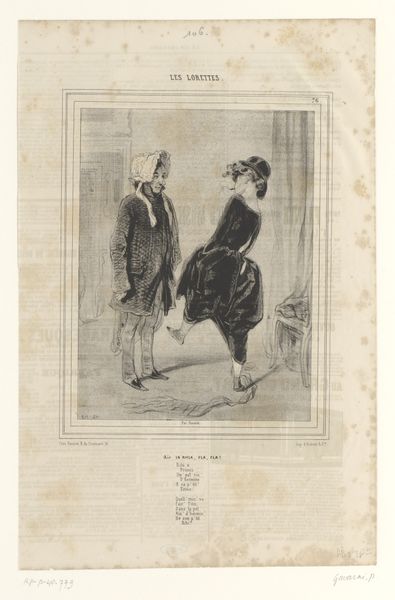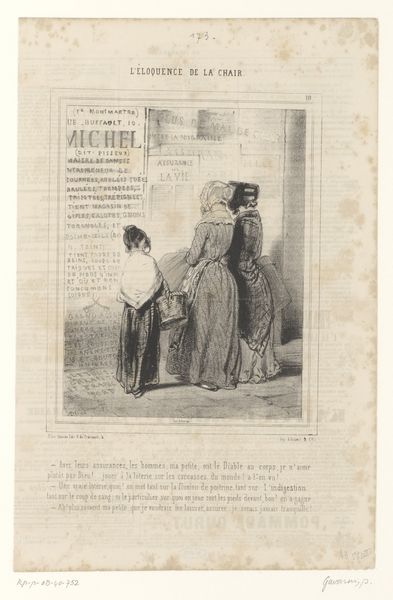
drawing, print, etching
#
drawing
#
narrative-art
# print
#
etching
#
caricature
#
figuration
#
romanticism
#
genre-painting
Dimensions: height 315 mm, width 237 mm
Copyright: Rijks Museum: Open Domain
Curator: I find myself drawn to this etching by Paul Gavarni, created in 1846. It's titled "Twee gemaskerde vrouwen op een carnavalsbal," or "Two Masked Women at a Carnival Ball," held in the collection of the Rijksmuseum. Editor: The first impression is one of furtive secrecy, wouldn't you say? The dark cloaks and masks create an aura of concealed identity. It evokes the peculiar social freedoms that carnivals grant, offering anonymity and, perhaps, transgression. Curator: Indeed. Carnival, historically, functioned as a sanctioned period of role reversal and social critique. The masks become critical tools of social commentary, obscuring the wearer while amplifying their potential message, particularly for women navigating a patriarchal society. Editor: I'm intrigued by the visual weight of the domino masks and cloaks themselves. Note how they seem to flatten and simplify the figures, reducing them to archetypes rather than distinct individuals. It reinforces the idea of universal behaviors released through the event. What does the costume convey, more broadly? Curator: Costume in Gavarni's era becomes intertwined with class and social standing, even in disguise. Their masks shield them, perhaps blurring social lines for a brief period. But their posture and attire, however, betray some clues about their place within society. Notice the way the masks afford them a kind of freedom to observe and comment, to see and be unseen in turn. What unspoken truths do those gazes behind masks behold? Editor: The masks transform them into symbolic figures of mischief and observation. It makes me consider what these masked figures represent on a psychological level. Does the act of masking liberate suppressed desires or expose hidden truths about the self? Are they, as archetypes, representative of a collective unconscious acting out during Carnival? Curator: It's precisely the duality, isn't it? Concealment and revelation existing in tandem. In our modern context, considering these women, particularly, the mask becomes symbolic of liberation from certain constraints – societal, gendered constraints. We are left with lingering questions on who benefits from this temporary unbinding. Editor: It really causes you to reflect upon these powerful visual cues, a visual lexicon of the self, transformed through anonymity. Thank you for drawing my attention to these subtleties! Curator: Likewise! Understanding that socio-historical context illuminates the potent, complex narratives within what seems, at first, like a simple genre scene.
Comments
No comments
Be the first to comment and join the conversation on the ultimate creative platform.
